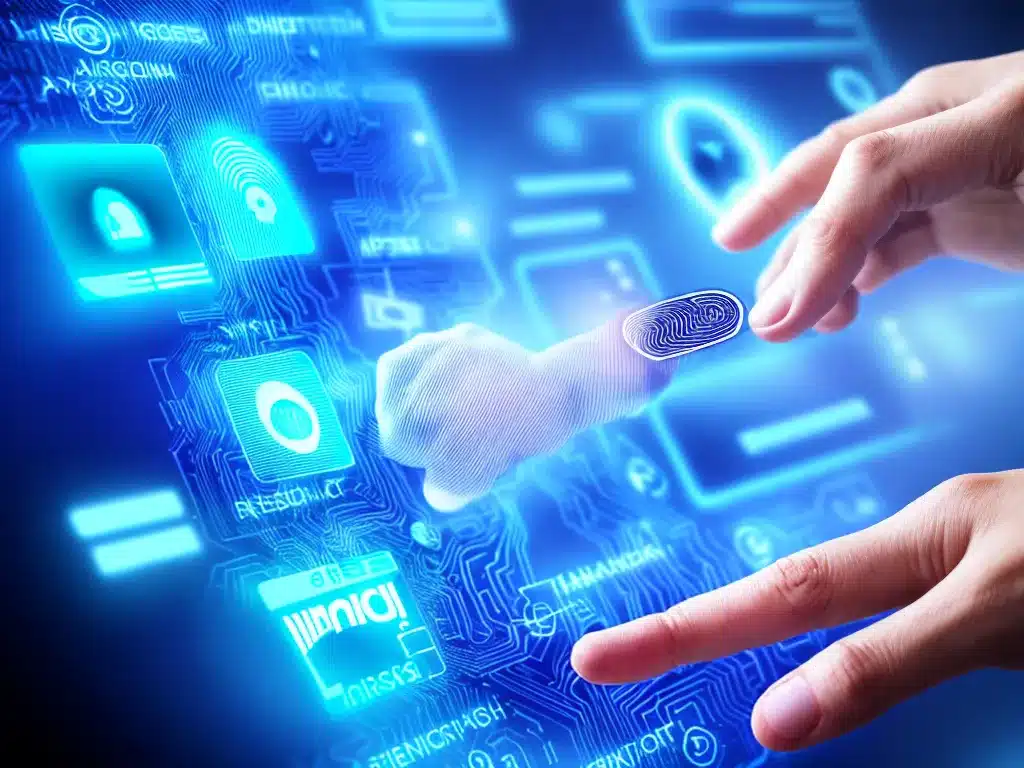
What is Biometric Authentication?
Biometric authentication is the process of using unique biological characteristics, such as fingerprints, facial features, retina scans, and voice patterns, to verify an individual’s identity.
Biometric authentication systems compare an individual’s biometric data against a database of registered users. If the data matches, the individual’s identity is confirmed and access to devices, accounts, or facilities is granted.
Some common types of biometric authentication include:
-
Fingerprint scanning – Using fingerprint patterns to authenticate identity. This is one of the most prevalent and accurate forms of biometric authentication.
-
Facial recognition – Using an image of a person’s face, facial recognition software can map facial features and validate identity. This method is becoming more widespread with the advancement of digital cameras and AI.
-
Iris/retina scanning – Analyzing the unique patterns in a person’s iris or retina to identify individuals. This provides very high accuracy but requires close-range scanning.
-
Voice recognition – Matching vocal patterns against a database of registered voice prints for authentication. This method is susceptible to changes in voice due to illness or aging.
-
Vein pattern recognition – Using vein patterns in hands, fingers, or the face as identifiers. This method is highly secure as vein patterns are internal and unique.
Benefits of Biometric Authentication
Biometric authentication offers several advantages over traditional methods like passwords, ID cards, and PIN numbers:
Enhanced Security
Biometric data is intrinsically linked to an individual and therefore extremely difficult to falsify or replicate. This makes biometric authentication far more secure than token-based or knowledge-based methods.
Improved Convenience
There is no need to remember passwords or carry physical ID cards with biometric authentication. It only requires the person’s natural biological traits. This improves convenience and usability.
Reduced Risk of Fraud
Biometric systems dramatically reduce the risk of fraud, as biometric traits cannot be lost, shared, or stolen like passwords and ID cards can. This prevents unauthorized access by bad actors.
Multi-factor Authentication
Biometrics can be easily integrated with other authentication factors like one-time pins, security keys, etc. Multi-factor authentication combines multiple methods for enhanced security.
Audit Trails
Most biometric systems keep detailed logs of access attempts. This provides full audit trails for monitoring and investigation purposes.
Risks and Limitations of Biometric Authentication
Despite the benefits, there are some downsides and risks associated with biometric authentication:
Privacy Concerns
Collecting and storing people’s sensitive biometric information raises significant privacy concerns. Biometric data could potentially be used for unauthorized surveillance or profiling.
Spoofing Attacks
While difficult, determined attackers may attempt to spoof biometrics using methods like synthetic fingerprints or high-resolution photo prints. This remains an ongoing challenge.
Lack of Secrecy
Biometric traits like fingerprints and facial features cannot be kept secret. If biometric data is compromised, it cannot be reset like passwords. New enrollment is required.
Technical Issues
Sensor or software failures can result in false rejections of authorized users. Environmental factors like dry skin or lighting changes can also impact biometric systems.
Cost of Implementation
Installing biometric hardware and software across large organizations can entail significant upfront investment and ongoing maintenance costs.
Best Practices for Implementation
If deploying biometric authentication, following best practices can help maximize benefits while minimizing risks:
-
Conduct regular system testing to ensure continued accuracy and reliability.
-
Enroll multiple biometric identifiers per user to allow fallback options in case of technical issues with a particular biometric.
-
Encrypt biometric data end-to-end and use the shortest signature size possible.
-
Allow users to periodically refresh their biometric enrollment to account for changes over time.
-
Ensure liveness detection capabilities to protect against spoofing.
-
Adopt strict access controls, auditing capabilities, and key/data management protocols.
-
Educate users on proper interaction with biometric sensors to improve scan quality.
-
Evaluate multimodal biometric systems that fuse multiple biometrics for authentication.
-
Include fallback authentication mechanisms in case biometric authentication fails or is not possible.
Conclusion
Biometric authentication enables convenient, highly secure identity confirmation using unique personal attributes. However, potential privacy risks, technical challenges, and implementation costs need to be weighed. Following best practices for data security, system resilience, and user experience is key to realizing the full benefits of biometric authentication while safeguarding against the risks. With careful deployment, biometrics can take identity management to the next level.












